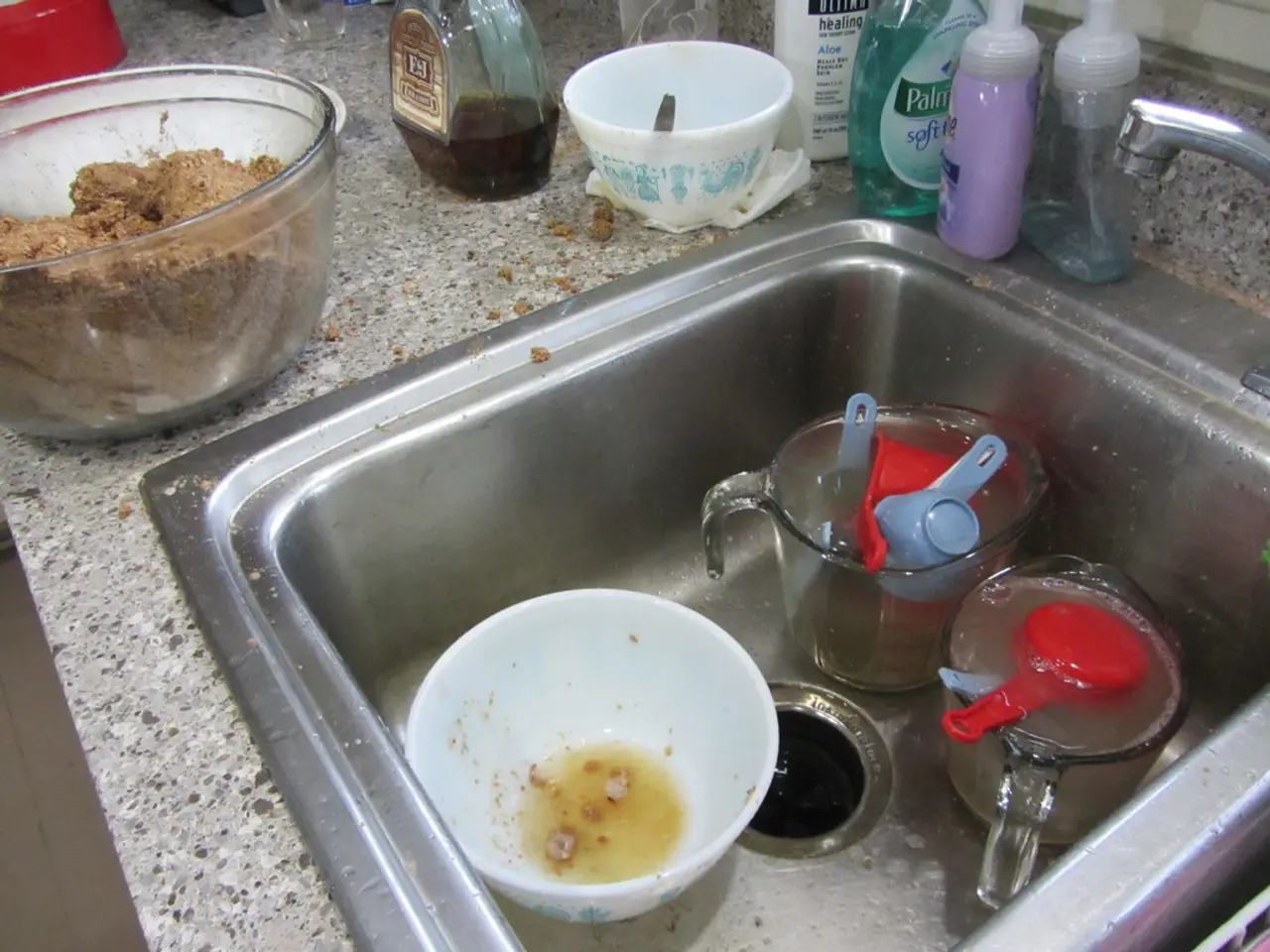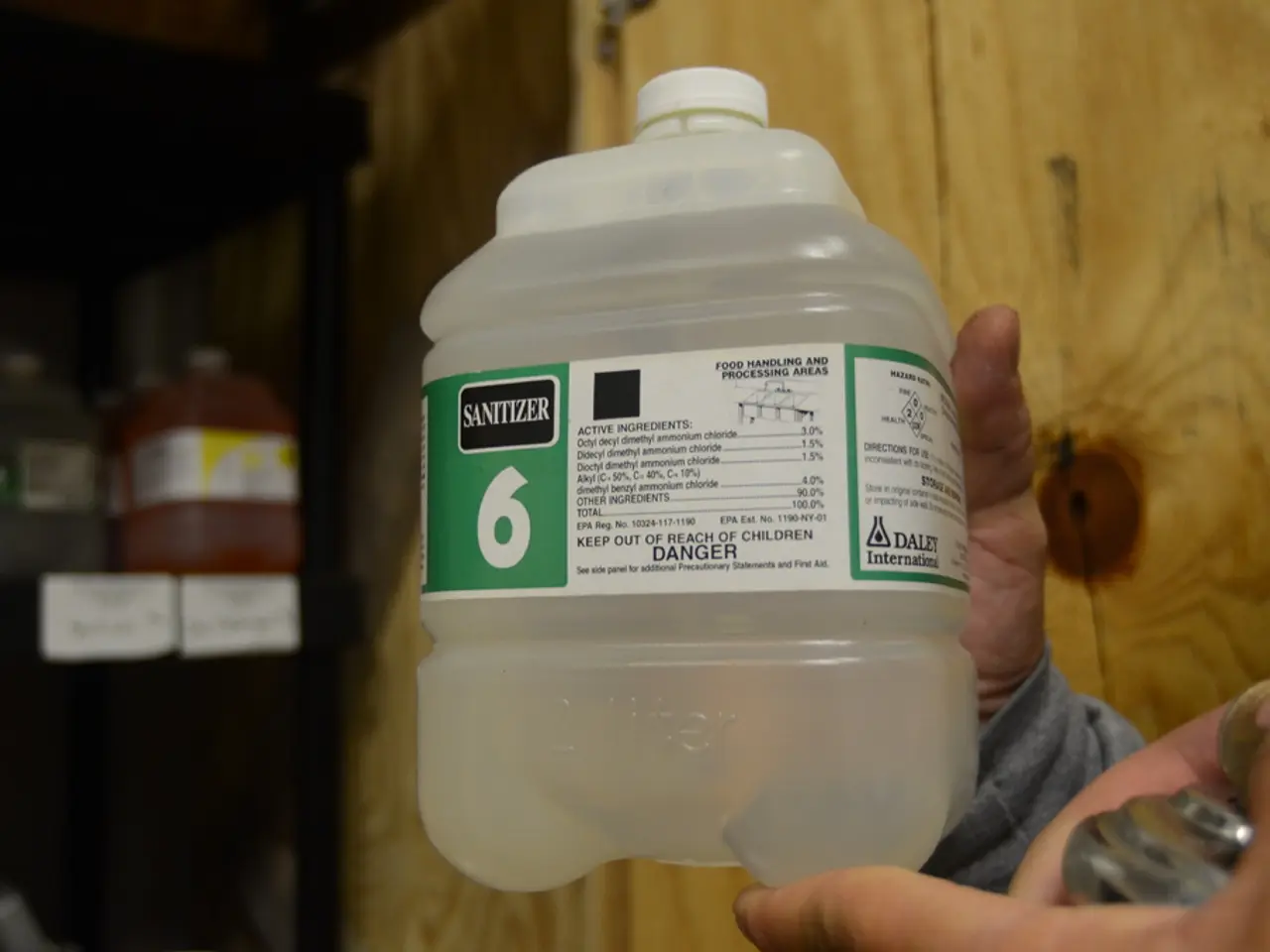Maintaining a sanitary environment is crucial when preparing meals in the kitchen.
In the realm of meal preparation, maintaining food safety is paramount to ensuring a nutritious and illness-free dining experience. The Federal Institute for Risk Assessment (BfR) has issued guidelines that focus on preventing cross-contamination and ensuring thorough cooking at various stages: preparation, cooking, storing, and reheating.
To prevent cross-contamination, it is essential to separate raw and cooked foods. Use different cutting boards, utensils, and containers for raw meats and ready-to-eat foods like vegetables or cooked items to avoid bacteria transfer. Cleanliness is also crucial, as washing hands thoroughly before and after handling raw foods is advised. Sanitize surfaces and kitchen tools between tasks to eliminate any potential germs.
When it comes to ensuring thorough cooking, following safe internal temperatures is vital. Use a food thermometer to measure the thickest part of the food without touching bone or pan. The USDA recommends specific minimum internal temperatures for various foods: - Poultry (whole or ground): 165°F (74°C) - Ground beef, pork: 160°F (71°C) - Steaks, chops, roasts (beef, pork, lamb): 145°F (63°C) + 3 minutes rest - Fish and shellfish: 145°F (63°C) - Egg dishes: 160°F (71°C) - Leftovers and casseroles: 165°F (74°C)
For hobby cooks preparing meals in advance, it is recommended to cook dishes that do not need to be heated before eating, such as desserts, raw foods, or salads. However, if reheating is necessary, leftovers should be reheated to at least 165°F (74°C) using microwave, oven, or stovetop methods to ensure safety.
Proper storage is also essential. Use airtight and freezer-safe containers to prevent freezer burn and flavor transfer. Portion meals into single-serving portions for faster thawing and easier reheating. Label meals with the name and date of freezing to manage freshness and avoid waste.
While the BfR guidelines do not advise peeling root vegetables like cucumbers and carrots to minimize the risk of infection, indirect transmission of germs can occur via hands, utensils, work surfaces, knives, or other kitchen tools. To protect against illness, all raw animal products, raw sprouts, and frozen berries should be heated thoroughly before consumption.
By following these practices—clean separation, accurate temperature control during cooking and reheating, and proper storage—you can significantly reduce the risk of foodborne illness and keep your meal prep safe and nutritious. The BfR guidelines also remind us to follow basic hygiene practices, such as washing hands frequently and using separate cutting boards for raw and cooked foods.
- Incorporating science-based practices into our cooking lifestyle aids in maintaining food safety, ensuring a health-and-wellness focused dining experience, which is vital for everyone.
- Embracing the use of therapies-and-treatments like food thermometers can help achieve safe internal temperatures for various foods, as recommended by the USDA, thus reducing the risk of foodborne illness.
- For those passionate about health-and-wellness, food-and-drink, and the lifestyle associated with it, adherence to best practices like proper storage, cross-contamination prevention, and thorough cooking is key for a safe and nutritious meal prep.




